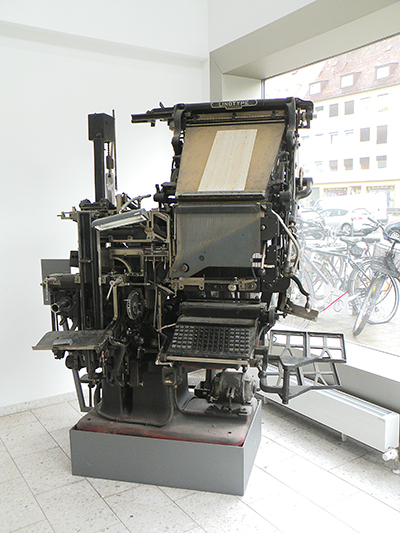
|
The other day I was driving on the freeway and noticed an odd thing. Even at 80 miles per hour,1 I was keeping perfect pace and relative station with the car in the next lane to the right that was twenty feet ahead of me and also with the car in that lane thirty feet behind the other. We went along in a stable triangle for mile after mile. Unlike following a car in my own lane, where I might for reasons of safety hold a certain distance, in this case I was just part of an unplanned, uncoordinated trio going down the road in perfect formation.
This wasn’t a conscious decision, either on my part or—I’m sure—on that of the other two drivers. And the fact that our relative positions did not change by as much as a foot while going up and down modest grades suggests it was not a random coincidence. The three of us just naturally fell into a pattern that did not need changing. It was not an act of cooperation but more the unconscious or subconscious adoption of a formation that was … comfortable.
Birds do this when they flock together in a tight pattern that fills the sky with wheeling bodies, all of which maintain the same distance one to another during relatively high-speed maneuvers. Fish do this in their schools, too. They react to changes in the speed and direction of the members around them as if telegraphically transmitted, although the transaction is more like the individual’s perfect awareness of its surroundings and the positions of others. Perhaps, too, they are guided by subtle changes in air or water pressure caused by the presence of those other bodies.
Geese also fly in perfect V-formations—although I understand that this shape provides physical lift to the birds along the outer edges of the V through a process akin to an aircraft’s wingtip vortices. Proof of this is suggested by the fact that the leader position will change from time to time, because it takes additional effort and energy to cleave the clean air ahead than to ride the moving air that another bird has roiled.
Pilots of both airplanes and helicopters are trained to fly in formations and echelons, too. Here, however, the intention is not any benefit from vortex lift but to create a mutual, overlapping pattern of observation and protection from attack. Still, after much practice—because human pilots first learn to fly with freedom of motion and to fear brushing another plane in close contact—the pilots are relying on some part of the human brain that is attuned to the positions and intentions of others of its kind. Motorcycle officers in the California Highway Patrol, when riding in a group, maintain a perfect, square formation of uniform side-to-side and fore-and-aft distances—although I suspect this is more a demonstration of rider skill than a need for protection.
We see the same sort of coordination, again with practice, among dancers, whether it’s two people are engaged in a waltz or twenty in a chorus line; soldiers, whether they are marching in step or moving to attack a position; athletes when they execute a pattern play; and singers and musicians, whether they are performing a duet or a chorus, or playing in a quartet or a symphony orchestra.
The question of singing and playing in a group raises the issue of timing as well. Yes, the group usually has a conductor to establish the beat with his or her hands and a baton. And a band usually follows the beat established by the drummer or bass player. But the four, ten, or a hundred other members in the group can surrender their own sense of timing—their mental independence—to follow that beat and coordinate the action of their individual voices or instruments in support of it.
Clearly, this ability to work together with almost telepathic precision is not unique to human beings, because fish and birds do it without training, and predators like wolves can move in a coordinated attack out of instinct. But I don’t remember observing the same level of precision among other primates. Chimps and gorillas might follow a hierarchical leader in a course of action, but none of the nature shows I’ve seen suggest that apes can cooperate efficiently to execute a complicated football play; throw from the area of third base to second to first in a baseball double play; or drive race cars competitively at 150 miles an hour, often moving wheel against wheel, and yet not consistently end up in horrendous wrecks.
Human beings have remarkable freedom of thought and inventiveness, and yet we can both consciously and unconsciously surrender our independence to perform as a team—or even just adapt to a traffic pattern on the freeway. We not only have the advantage of interpersonal and group communication, using shared and agreed-upon symbols and values, so that we can negotiate an approach to a common problem. We also have the ability to blend our actions and sense of timing, with or without prior agreement, to coordinate in a common action. If you doubt this, think of the times you’ve seen someone start to play the piano and a relative stranger will walk up to sing along, in time and in key, without a word being spoken between them.
We are individuals, with our own purposes, intentions, and interests, but we are also capable of amazing cooperation on both a conscious and an unconscious level. Our brains evolved both to work independently and to cooperate completely and seamlessly.
It is this dual quality of the human mind that gives me faith we will one day travel to the stars—and deserve to be there.
1. Yes, in California, with a posted speed limit of 65 miles per hour, traffic sometimes still travels at about 80—the supposedly verboten 15 miles over the speed limit—unless congestion forces everyone down to a crawl. It’s not legal, but the Highway Patrol ignores you unless you are moving outside the ambient speed and pattern—say, doing 100 and weaving in and out. The patrol cars themselves are moving right along with traffic, too, and they’ll quickly pass you in disgust if you poke along at the posted speed while everyone else has adopted a higher speed. And, if you travel in the two left lanes at that speed limit, you’ll likely get run over by a panel van.





